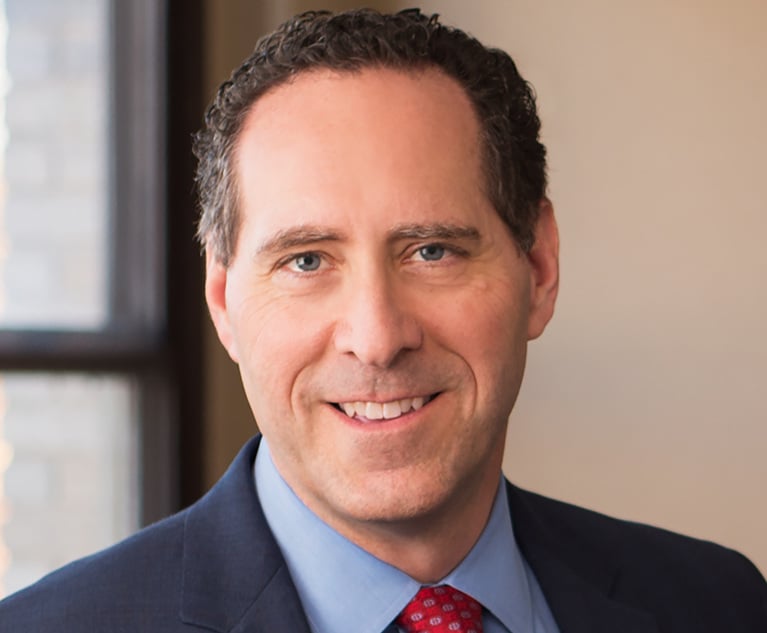It Takes Two: The Attorney-Marketer Relationship
Law firms, regardless of size, are usually composed of many departments, each responsible for contributing to the firm's success. Whether that is a single administrator who handles the marketing or a firm that has an entire department of people, the marketing side usually cannot function without the assistance of the legal side. When it comes to promoting your firm's success, or ensuring your lawyers are known thought leaders in their fields, your firm's marketing professionals become an integral part of your team. Creating brand awareness and reputation for the firm, as well as setting the framework for effective business development for each practice group is essential to your firm's success. However, this only happens when there is a productive and mutually respectful relationship between marketers and their lawyer colleagues. Establishing this dynamic can often be challenging until the marketer builds a rapport with your team of attorneys which, like any good relationship, takes time and requires an open line of communication.
August 24, 2017 at 04:12 PM
6 minute read
Law firms, regardless of size, are usually composed of many departments, each responsible for contributing to the firm's success. Whether that is a single administrator who handles the marketing or a firm that has an entire department of people, the marketing side usually cannot function without the assistance of the legal side. When it comes to promoting your firm's success, or ensuring your lawyers are known thought leaders in their fields, your firm's marketing professionals become an integral part of your team. Creating brand awareness and reputation for the firm, as well as setting the framework for effective business development for each practice group is essential to your firm's success. However, this only happens when there is a productive and mutually respectful relationship between marketers and their lawyer colleagues. Establishing this dynamic can often be challenging until the marketer builds a rapport with your team of attorneys which, like any good relationship, takes time and requires an open line of communication. It becomes critical, then, to understand the obstacles that can get in the way of building an effective partnership in order to combat them. Below we'll discuss three common challenges that occur between the marketing team and attorneys as well as strategies for overcoming them.
Adjusting to Change
It has been 40 years since the Supreme Court issued its precedent opinion in Bates v. State Bar of Arizona, No. 76-316. 433 U.S. 350 (1977),that ultimately allowed lawyers to advertise. Since then, firms have been striving to generate business through a variety of channels to stay competitive, thinking far beyond the referral model or their reputations alone to generate revenue. Further, the advent of new technology and social media as sources of business generation has brought an onslaught of options and instant publicity. However, for many attorneys, especially the seasoned ones, the current avenues for promotional growth may seem overwhelming and they can be skeptical about the ideas that marketers suggest for their business development efforts.
Given the constant changes in the legal marketing landscape, it can be especially challenging for marketers who are looking for buy-in on a new initiative. Marketers should use hard facts and data to support their rationale for certain marketing efforts if met with skepticism. For example, social media and Google analytics can track views and reach for specific posts or areas of a website, highlighting content that is particularly engaging. Using measurable outcomes will help justify attorney's efforts and also show what topics, practice areas or specific attorneys are garnering the most attention. This also taps into attorneys' competitive nature—if they see their peers creating content and engaging in business development activity that performs well, they will be more inclined to jump on the band wagon themselves. To ensure your attorneys are adapting, it helps to show, rather than tell them how their outreach and thought leadership efforts will produce genuine results.
Lack of Responsiveness
As anyone who has worked in a law firm can attest, attorneys are swamped, especially with the billable hour still reigning supreme in most firms. Nonbillable work is often pushed to the last minute and is usually not given the same attention a billable matter receives. Constantly tracking down deliverables from attorneys to meet pending deadlines often leaves marketers feeling more like a pest than a strategic partner. Attorneys can be elusive when it comes to meeting marketing objectives, even if that's not the intent. A lack of responsiveness does not necessarily indicate a lack of interest but often is a symptom of having to meet high billable hour requirements.
To offset this, marketers have to be cognizant of, and sensitive to, attorney time constraints by being accountable and thorough. Project management is key to a successful relationship with attorneys as keeping track and monitoring what needs to get done, and who is responsible for handling each task takes a heavy load off their shoulders. Many elements of marketing and business development needs can be tackled by nonattorneys, so the marketer's job is to identify what specifically needs attorney input and what can be taken care of by someone else. In tandem, marketers can identify what projects take priority and what is more of a “nice to have” that can either be delegated to someone else or can be addressed at a later time. If the process is streamlined and the expectations and timelines are clear, then the collaboration is ripe for success.
Conflicting Messages
Marketers are often juggling simultaneous requests from multiple stakeholders which can lead to conflicts. The agendas for various practice groups are not always functioning in tandem, especially at larger firms where departments may be siloed and cross-department communication can be limited. This can leave marketing teams feeling pulled in many directions as attorneys within the same practice area request different support and resources or attorneys across practice groups compete for the same attention. Further, one or both parties may lack the understanding of why specific initiatives are established in the first place and what the ends goals are for those efforts.
This content has been archived. It is available through our partners, LexisNexis® and Bloomberg Law.
To view this content, please continue to their sites.
Not a Lexis Subscriber?
Subscribe Now
Not a Bloomberg Law Subscriber?
Subscribe Now
NOT FOR REPRINT
© 2025 ALM Global, LLC, All Rights Reserved. Request academic re-use from www.copyright.com. All other uses, submit a request to [email protected]. For more information visit Asset & Logo Licensing.
You Might Like
View All
Montgomery McCracken Touts 'Record' Financial Performance Despite Shrinking Head Count
6 minute read
Cohen Seglias Leader Discusses Growing From Construction Practice into Full-Service Law Firm


Lessons From Five Popular Change Management Concepts: A Guide for Law Firm Leaders in 2025
Trending Stories
- 1Paul Hastings, Recruiting From Davis Polk, Continues Finance Practice Build
- 2Chancery: Common Stock Worthless in 'Jacobson v. Akademos' and Transaction Was Entirely Fair
- 3'We Neither Like Nor Dislike the Fifth Circuit'
- 4Local Boutique Expands Significantly, Hiring Litigator Who Won $63M Verdict Against City of Miami Commissioner
- 5Senior Associates' Billing Rates See The Biggest Jump
Who Got The Work
J. Brugh Lower of Gibbons has entered an appearance for industrial equipment supplier Devco Corporation in a pending trademark infringement lawsuit. The suit, accusing the defendant of selling knock-off Graco products, was filed Dec. 18 in New Jersey District Court by Rivkin Radler on behalf of Graco Inc. and Graco Minnesota. The case, assigned to U.S. District Judge Zahid N. Quraishi, is 3:24-cv-11294, Graco Inc. et al v. Devco Corporation.
Who Got The Work
Rebecca Maller-Stein and Kent A. Yalowitz of Arnold & Porter Kaye Scholer have entered their appearances for Hanaco Venture Capital and its executives, Lior Prosor and David Frankel, in a pending securities lawsuit. The action, filed on Dec. 24 in New York Southern District Court by Zell, Aron & Co. on behalf of Goldeneye Advisors, accuses the defendants of negligently and fraudulently managing the plaintiff's $1 million investment. The case, assigned to U.S. District Judge Vernon S. Broderick, is 1:24-cv-09918, Goldeneye Advisors, LLC v. Hanaco Venture Capital, Ltd. et al.
Who Got The Work
Attorneys from A&O Shearman has stepped in as defense counsel for Toronto-Dominion Bank and other defendants in a pending securities class action. The suit, filed Dec. 11 in New York Southern District Court by Bleichmar Fonti & Auld, accuses the defendants of concealing the bank's 'pervasive' deficiencies in regards to its compliance with the Bank Secrecy Act and the quality of its anti-money laundering controls. The case, assigned to U.S. District Judge Arun Subramanian, is 1:24-cv-09445, Gonzalez v. The Toronto-Dominion Bank et al.
Who Got The Work
Crown Castle International, a Pennsylvania company providing shared communications infrastructure, has turned to Luke D. Wolf of Gordon Rees Scully Mansukhani to fend off a pending breach-of-contract lawsuit. The court action, filed Nov. 25 in Michigan Eastern District Court by Hooper Hathaway PC on behalf of The Town Residences LLC, accuses Crown Castle of failing to transfer approximately $30,000 in utility payments from T-Mobile in breach of a roof-top lease and assignment agreement. The case, assigned to U.S. District Judge Susan K. Declercq, is 2:24-cv-13131, The Town Residences LLC v. T-Mobile US, Inc. et al.
Who Got The Work
Wilfred P. Coronato and Daniel M. Schwartz of McCarter & English have stepped in as defense counsel to Electrolux Home Products Inc. in a pending product liability lawsuit. The court action, filed Nov. 26 in New York Eastern District Court by Poulos Lopiccolo PC and Nagel Rice LLP on behalf of David Stern, alleges that the defendant's refrigerators’ drawers and shelving repeatedly break and fall apart within months after purchase. The case, assigned to U.S. District Judge Joan M. Azrack, is 2:24-cv-08204, Stern v. Electrolux Home Products, Inc.
Featured Firms
Law Offices of Gary Martin Hays & Associates, P.C.
(470) 294-1674
Law Offices of Mark E. Salomone
(857) 444-6468
Smith & Hassler
(713) 739-1250





